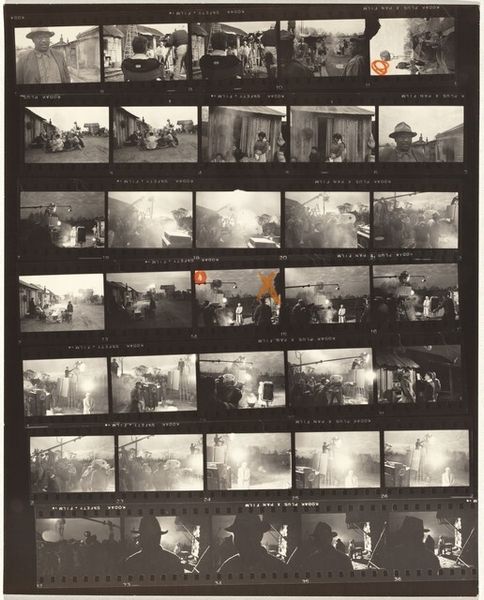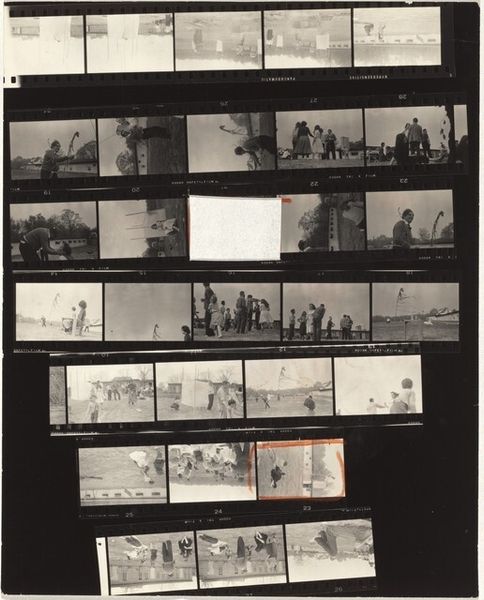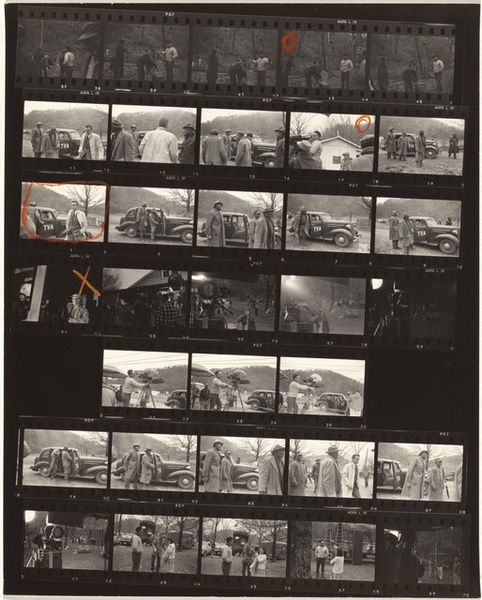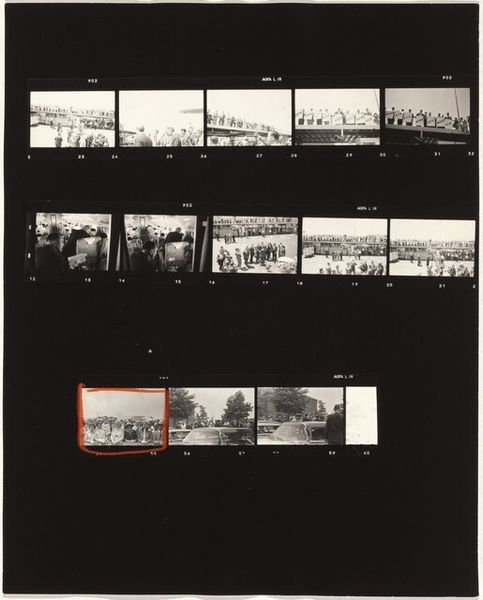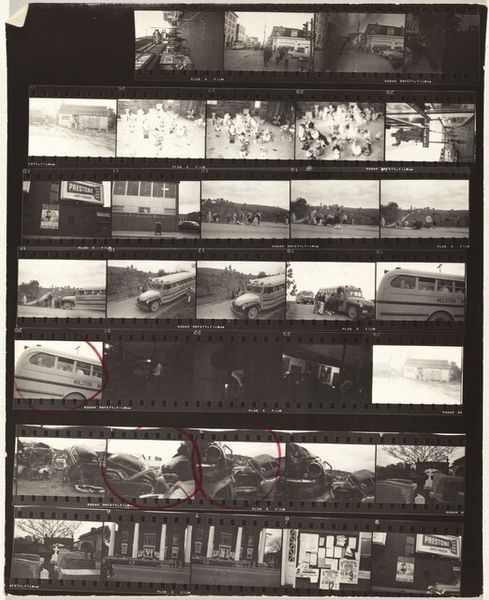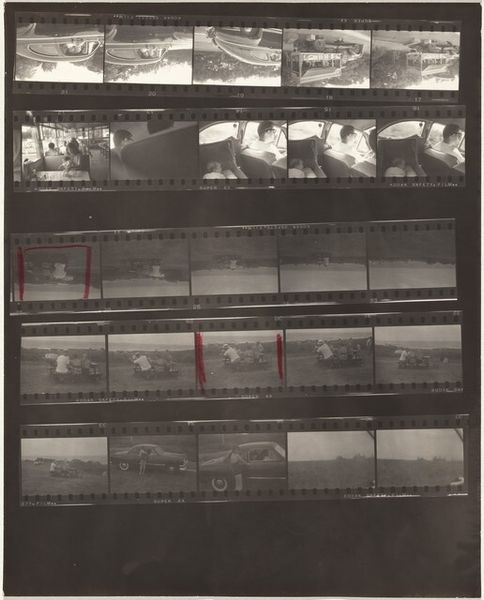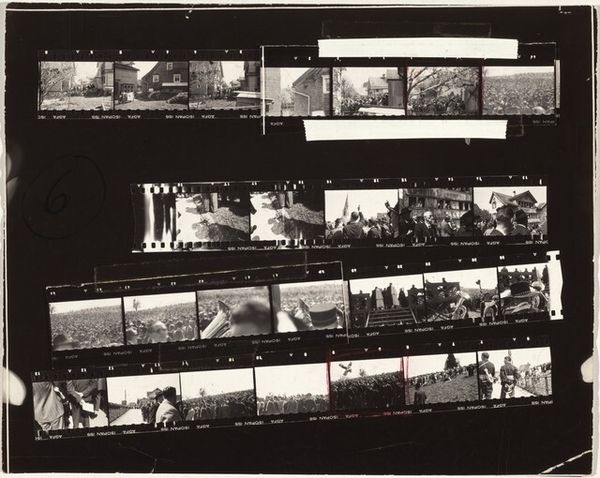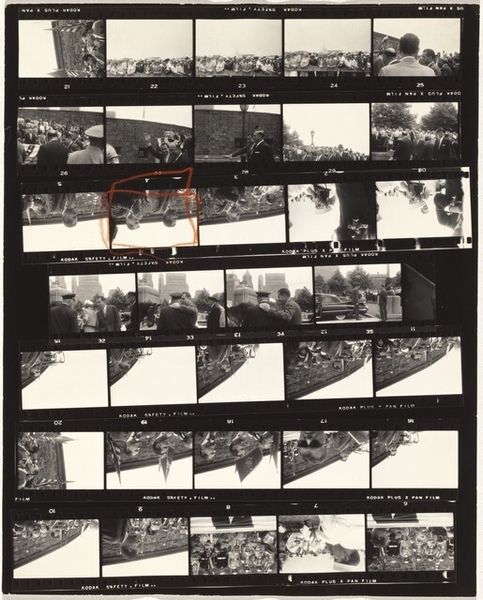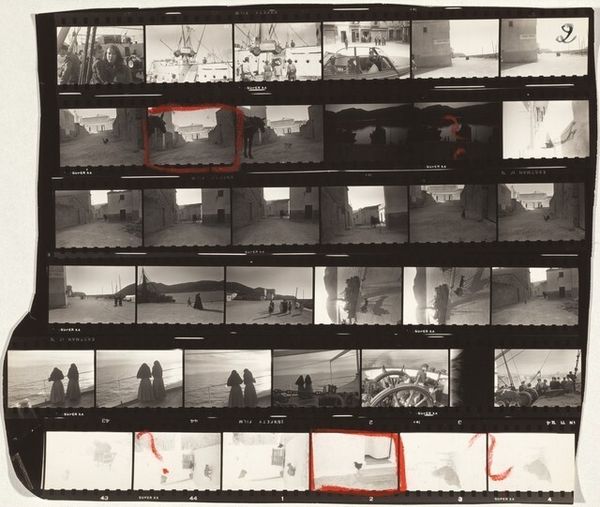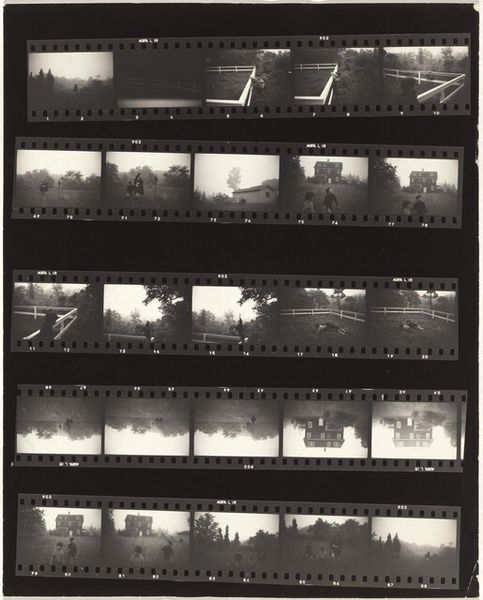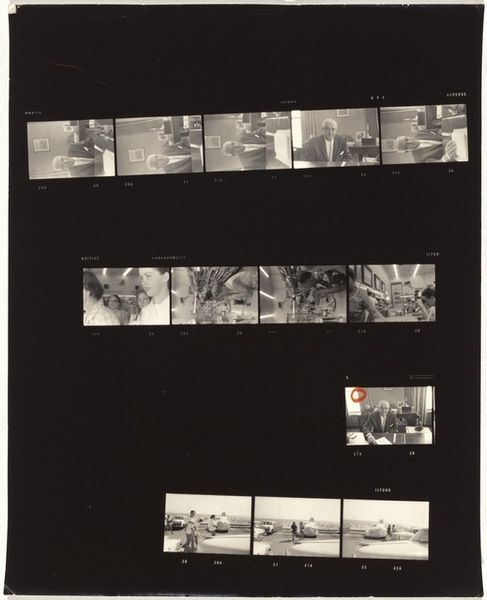
print, photography, gelatin-silver-print
#
portrait
#
conceptual-art
# print
#
photography
#
gelatin-silver-print
#
pop-art
#
public art photography
Dimensions: overall: 25.2 x 20.2 cm (9 15/16 x 7 15/16 in.)
Copyright: National Gallery of Art: CC0 1.0
Curator: Let's talk about Robert Frank's "Nixon Campaign 3," a gelatin silver print from 1960. My first impression is one of almost overwhelming documentation. It’s raw. Editor: Overwhelming is a good word. I'm immediately drawn to the formal composition itself. The rigid grid of frames, like a filmstrip, presents a fractured narrative, emphasizing the medium's role in shaping our perception. Curator: Absolutely, and it’s crucial to consider the political context. Frank was known for critiquing power structures. Think about the social landscape of 1960—the Cold War, anxieties around national identity—and how Nixon embodied a certain conservative ideal. This layout gives insight into how Frank experienced, saw, and felt the political machine at work. The outtakes. The rawness. Editor: And what of Nixon himself? Note the various perspectives; some frames show Nixon directly addressing the crowd, while others capture him from odd angles, almost distorted. Is it a commentary on his carefully constructed image? I'm thinking about Lacan’s concept of the gaze and how power is visualized through specific aesthetic choices. Curator: I believe that's right. Those seemingly unintentional compositions speak volumes about control and manipulation of the campaign. Who controls the narrative? Also consider how different demographics in America would have received images of Nixon during that time, based on where they stood politically, economically, or in terms of race and gender. The meaning differs greatly based on your position. Editor: That resonates. Beyond political messaging, I am noticing how light plays across the photographic emulsion, the grain adding texture and depth. Does this suggest an unease? Curator: I think the uneasy feeling comes through intentionally. It’s a period rife with political division, and Frank captures that tension beautifully through the composition as well as his personal artistic choices. Editor: Seeing it this way opens up more space for thoughtful, and crucial interpretations. Curator: Indeed. Frank pushes us to confront the uncomfortable truths embedded in political imagery.
Comments
No comments
Be the first to comment and join the conversation on the ultimate creative platform.
